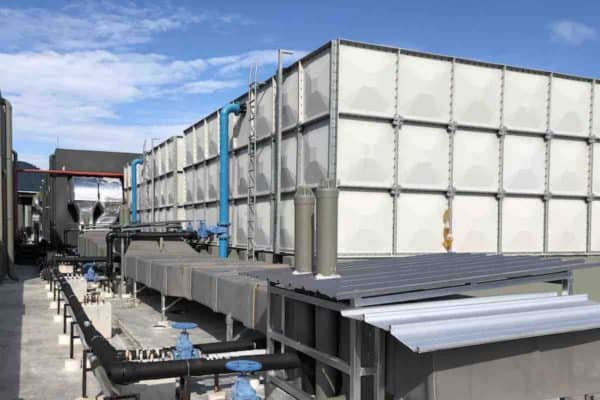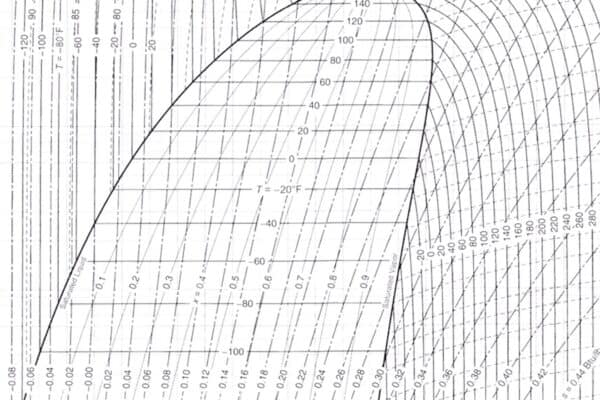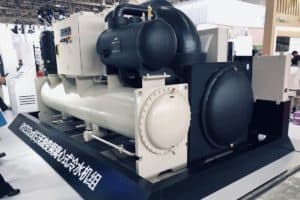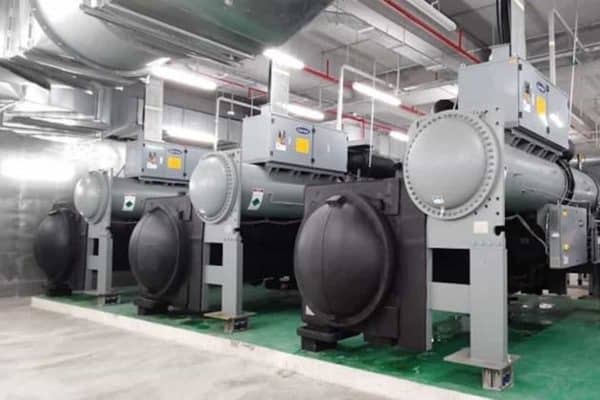6 Types of Valves Used in HVAC (with Details)
Valves are widely used in HVAC. Different valves have different functions. Valves used in HVAC have certain specifications. Junior engineers often don’t get to know all of the different HVAC valves. So, I organized 6 commonly used valves in HVAC.
In HVAC, there are 6 commonly used valves as follow:
- Butterfly Valve
- Gate Valve
- Check Valve
- Air-Vent Valve
- Motorized On/Off Valve
- Pressure Independent Balancing Control Valve
HVAC valves can be split into two categories; a) mechanical valve and b) motorized valve. Mechanical valves require manual operation while motorized valves operate automatically.
With that said, let’s take a closer look at each HVAC valve, see what materials they used and how they are applied.
Mechanical Valve
In HVAC, mechanical valves are simpler than motorized valves. Hence, people working in the HVAC industry don’t really pay much attention to mechanical valves. However, they are crucial to HVAC systems.
1. Butterfly Valve
A butterfly valve is a large isolation valve that has a huge lever on top and a piece of metal disc at the center that resembles the wing of a butterfly.
In HVAC, butterfly valves are almost always come in flange connection because they are usually used for pipe sizes above 50mm (2″). At such a large pipe size, thread connection is simply too difficult to be connected properly.

There are two types of butterfly valves in HVAC; a) wafer type and b) lugged type. A wafer type butterfly valve can be easily clamped in between two flanges while a lugged type butterfly valve requires multiple bolts and nuts. Hence, the wafer type is usually preferred.
Butterfly valves used in HVAC commonly have a pressure rating of either PN16 (16 bar) or PN25 (25 bar) with the former being more common because of the water pressure in chilled water systems.
Commonly available HVAC butterfly valves sizes are as follow:
| 40mm (1-1/2″) | 50mm (2″) | 65mm (2-1/2″) | 80mm (3″) |
| 100mm (4″) | 125mm (5″) | 150mm (6″) | 200mm (8″) |
| 250mm (10″) | 300mm (12″) | 350mm (14″) | 400mm (16″) |
The body of HVAC butterfly valves is often made of cast iron while the disc is made of ductile iron. Stronger materials such as aluminium bronze and stainless steel are available at a higher cost.
To ease the operation of HVAC butterfly valves, a malleable iron lever is preferred over a cast iron worm gear and hand wheel combo; a lever type butterfly valve opens and closes faster than a wheel type.
Such butterfly valves are commonly found in the HVAC chilled water system where there are large pipes, chillers, pumps and cooling towers. They serve as isolation valves to stop chilled water flow and condenser water flow during commissioning, repair and other occasions.
2. Gate Valve
A gate valve is a small isolation valve that has a circular wheel handle on top that turns clockwise or anti-clockwise to shut off or turn on the water flow.
In HVAC, gate valves are used when the pipe size is below 50mm (2″). As mentioned earlier, large gate valves are difficult to be tighten properly.
Other trades may use globe valves to isolate water flow when the pipe size gets above 50mm (2″). However, in HVAC, we switch to butterfly valves.

So, you can think of gate valves as small isolation valves while butterfly valves as large isolation valves.
HVAC gate valves are primarily made of bronze. They usually have a pressure rating of PN20 (20 bar). For a cheaper option, PN16 (16 bar) gate valves that are made of brass are available.
Regardless, their valve body is in gold color while their handle is often seen in red color.
Most HVAC gate valves have a connection that is threaded since they don’t go beyond 50mm (2″). However, gate valves are available in sizes beyond 50mm (2″).
Commonly available HVAC gate valves sizes are as follow:
| 15mm (1/2″) | 20mm (3/4″) | 25mm (1″) |
| 32mm (1-1/4″) | 40mm (1-1/2″) | 50mm (2″) |
| 65mm (2-1/2″) | 80mm (3″) | 100mm (4″) |
In HVAC, gate valves are commonly found in small chilled water pipes that branch out to chilled water fan coil units (CHWFCUs). Meanwhile, air handling units usually use large pipe sizes and thus, gate valves are less common.
Generally, gate valves are not ideal if you want to have a smooth flow. Certain flow switches and sensors can’t work well with a gate valve. Instead, we’ll use a ball valve.
In the meantime, I would like to inform you that you can learn quicker by getting my HVAC Begin (eBook) if you’re a beginner. But, if you have a year or two of experience, then I would suggest you consider my HVAC Basics (eBook). Nonetheless, I encourage you enroll in my HVAC Beginner Course: 10 Days to Become Competent in HVAC if you want to equipped yourself with a complete set of basic HVAC skills.
HVAC Beginner Course
Learn the most basics and foundational HVAC skills including cooling capacity calculation, equipment selection, duct sizing, pipe sizing, exhaust fan sizing, controls, electrical and more.
3. Check Valve
A check valve is a one-way valve that prevents water from flowing in the wrong direction. Usually, it is a spring-driven type that automatically shut off itself when there is insufficient water pressure. At the same time, if water flows in the opposite direction, it also shut off by itself.
Check valves are like the aortic valve that helps keep blood flowing in the correct direction through our human heart. In HVAC, it is an essential piece of fitting to prevent equipment from getting damaged.

A check valve is most commonly found after a pump such as a chilled water pump or a condenser water pump. Besides, it may also be installed at each air handling unit (AHU) and fan coil unit (FCU).
Often, pumps push water from lower levels to higher levels. Thus, the water pressure after a pump is much greater than the water pressure before a pump, not to mention the additional gravitation force from vertical riser pipes.
If a pump stops working, the high-pressure water at the outlet of the pump may flow backward vigorously, spinning the pump motor in the opposite direction and potentially destroying the pump.
Therefore, a check valve is always placed after a pump, not before a pump.
There are different kinds of check valves used in HVAC. Usually, they are much thinner than gate valves. HVAC check valves are available in both flange and thread connections. However, a flange type is more common since most HVAC pumps use large pipe sizes.
Commonly available HVAC check valve sizes as follow:
| 40mm (1-1/2″) | 50mm (2″) | 65mm (2-1/2″) | 80mm (3″) |
| 100mm (4″) | 125mm (5″) | 150mm (6″) | 200mm (8″) |
| 250mm (10″) | 300mm (12″) | 350mm (14″) | 400mm (16″) |
Similar to butterfly valves, the body and disc of HVAC check valves are mostly made of cast iron and ductile iron respectively. Nonetheless, aluminium bronze and stainless steel are available at a higher cost.
Like other HVAC valves, check valves are also available in PN16 (16 bar) and PN25 (25 bar).
Almost every HVAC system that has a header connection will use a check valve for each involved equipment.
4. Air-Vent Valve
An air-vent valve is an automatic air relief valve that is installed on the highest point in piping systems. It helps to release airlock or air bubbles inside the pipeline.
There are many ways the air can goes into the pipeline. When there are air bubbles inside the pipeline, pumps are not able to push water around effectively. Hence, air-vent valves are installed to solve the problem.
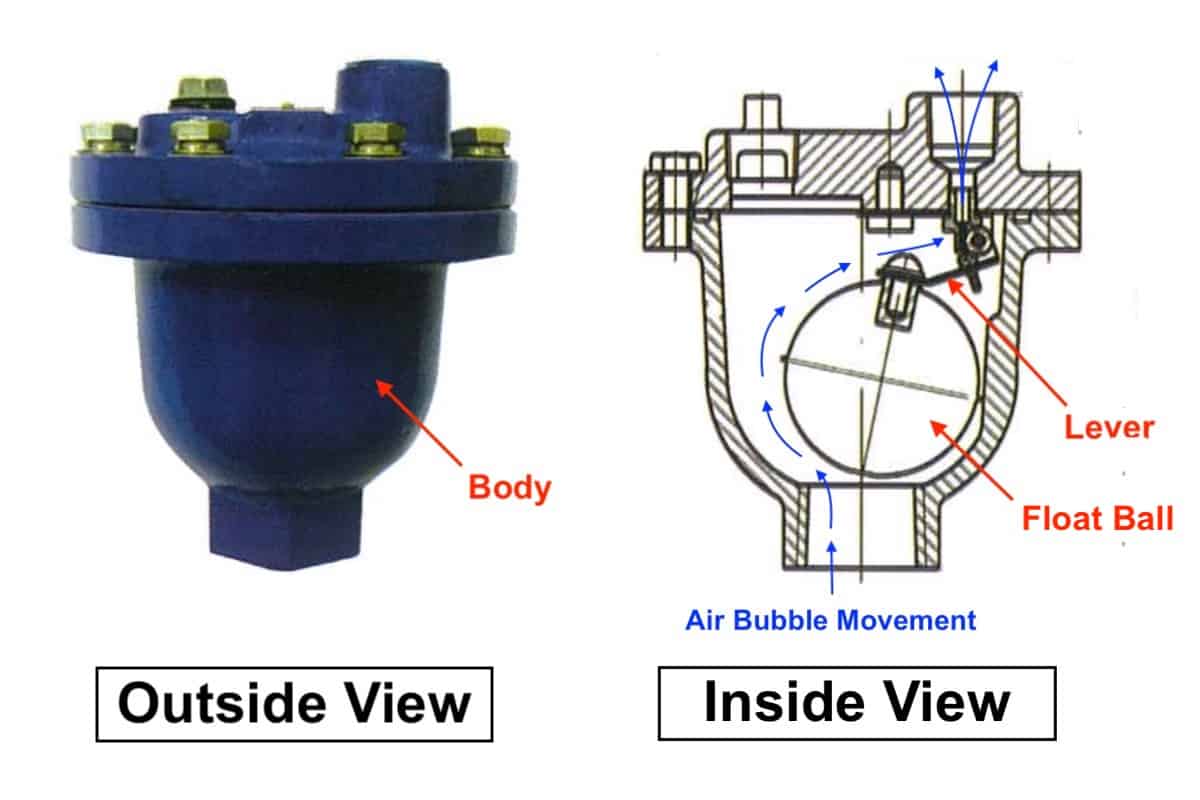
In HVAC, the body of air-vent valves is usually made of cast iron. The internal components of an air-vent valve must be made of stainless steel or other high-corrosive resistance materials.
The inside of an air-vent valve is always filled with water. If the internal components such as the float ball and level are rusted, they become sticky and the air-vent valve may not work properly.
By default, the float ball of an air-vent valve floats and closes the air relief pocket when there is no air bubble and water fills the inside of the air-vent valve. When there are air bubbles, the buoyant force drops and the float ball opens up the air relief pocket to allow the air bubbles to disperse. At the end of the process, a small amount of water may burst out of the air-vent valve as the float ball moves back up.
Motorized Valve
Now that we’ve discussed mechanical valves. Let’s move on to motorized valves.
As the name suggests, motorized valves are motor-driven and the motor is better known as actuators. A motorized valve has two parts; a) the actuator and b) the valve itself.
Many motorized valves share the same valve body. The valve body can be a butterfly valve or a gate valve depending on the pipe size. However, some motorized valves have dedicated valve bodies.
5. Motorized On/Off Valve
A motorized on/off valve is an automatic control valve that is usually used to regulate the chilled water flow rate of fan coil units (FCUs) based on thermostat signals.
Motorized on/off valves can only open or close. In other words, they allow water to flow at either 100% flow rate or 0% flow rate; any flow rate in between is not possible.
Such motorized valves are cheaper. They are usually used for chilled water fan coil units that have a small cooling capacity because regulating such a small water flow rate does not contribute much to the overall energy consumption and has significant improvements in temperature control.
The actuator of motorized on/off valves is usually compatible with multiple brands; different actuator brands can fit on the valve body of a motorized on/off valve.
Since the valve body is not much different from a mechanical valve such as a butterfly valve and a gate valve, you can refer to the earlier discussion for the details of the valve body.
For the details of the actuator of motorized on/off valves, see my post 4 Types of Actuators in HVAC.
6. Pressure Independent Balancing Control Valve
Pressure independent balancing control valves (PIBCVs or PICVs) are a new type of control valve in HVAC.
Previously, HVAC systems use a balancing valve and a control valve to regulate the chilled water flow rate of air handling units (AHUs). Now, a single PIBCV replaces both valves and it does a much better job.
I’ve discussed the needs and how PIBCVs help in hydronic balancing in my post Hydronic Balancing Basics (Chilled Water System). Check it out if you want to learn more about PIBCVs.
Basically, PIBCVs enable HVAC chilled water systems to achieve a good balance of chilled water flow across all equipment automatically and precisely.
Unlike motorized on/off valves, PIBCVs often use a globe valve as the valve body for a more precise water flow control. However, it is not exactly the same as a mechanical globe valve.
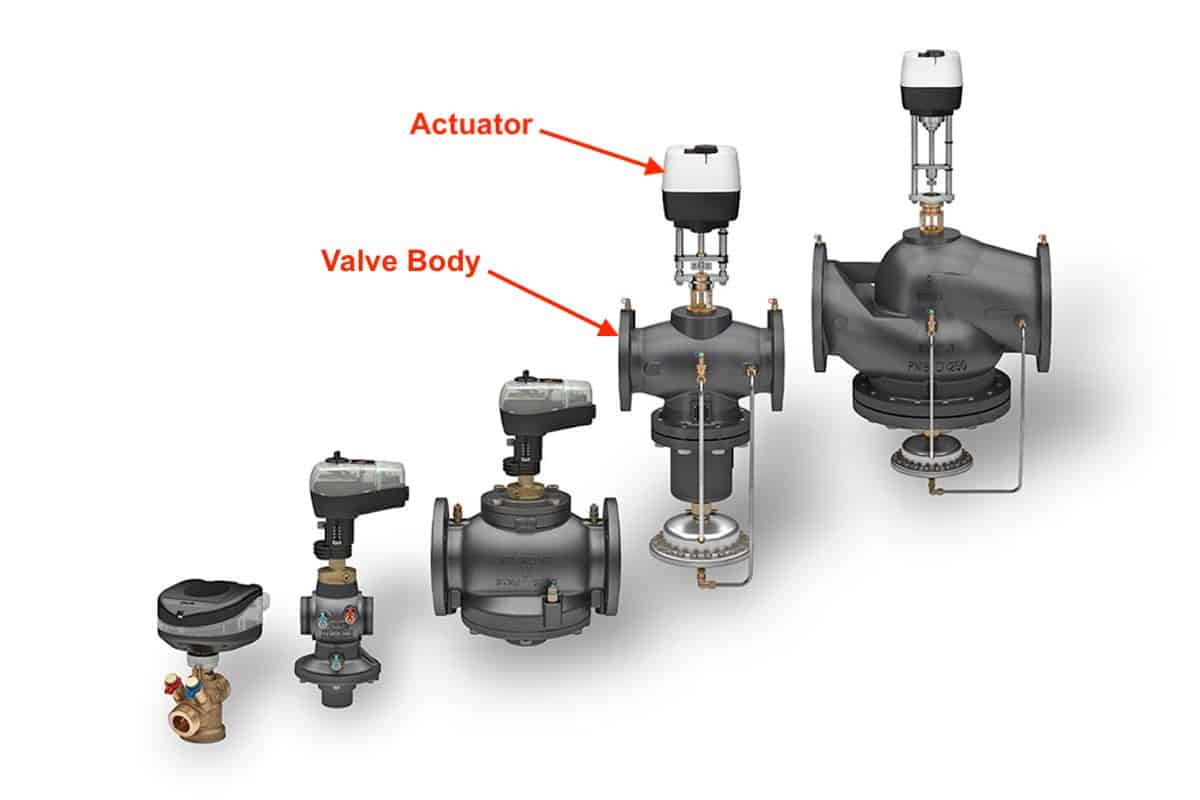
PIBCVs have various sizes. To select the appropriate size, we usually need to consult the manufacturer as they’ll do the calculation and select the suitable PIBCVs for us based on the water flow rate.
I also covered the details of the actuator of PIBCVs in my post 4 Types of Actuators in HVAC. So, do check it out if you’re interested to know more.
If you want to gain more insights about how these HVAC valves come together, check out my post Chilled Water Pump Connection Details.
Lastly, consider my HVAC Begin (eBook) if you’re a beginner and you want to have a foundational knowledge in HVAC. But, if you have a year or two of experience, then I would suggest you consider my HVAC Basics (eBook). Nonetheless, I encourage you enroll in my HVAC Beginner Course: 10 Days to Become Competent in HVAC if you want to equipped yourself with a complete set of basic HVAC skills.
HVAC Beginner Course
Learn the most basics and foundational HVAC skills including cooling capacity calculation, equipment selection, duct sizing, pipe sizing, exhaust fan sizing, controls, electrical and more.
If you have anything to add (or ask) about this topic, leave a comment down below!




